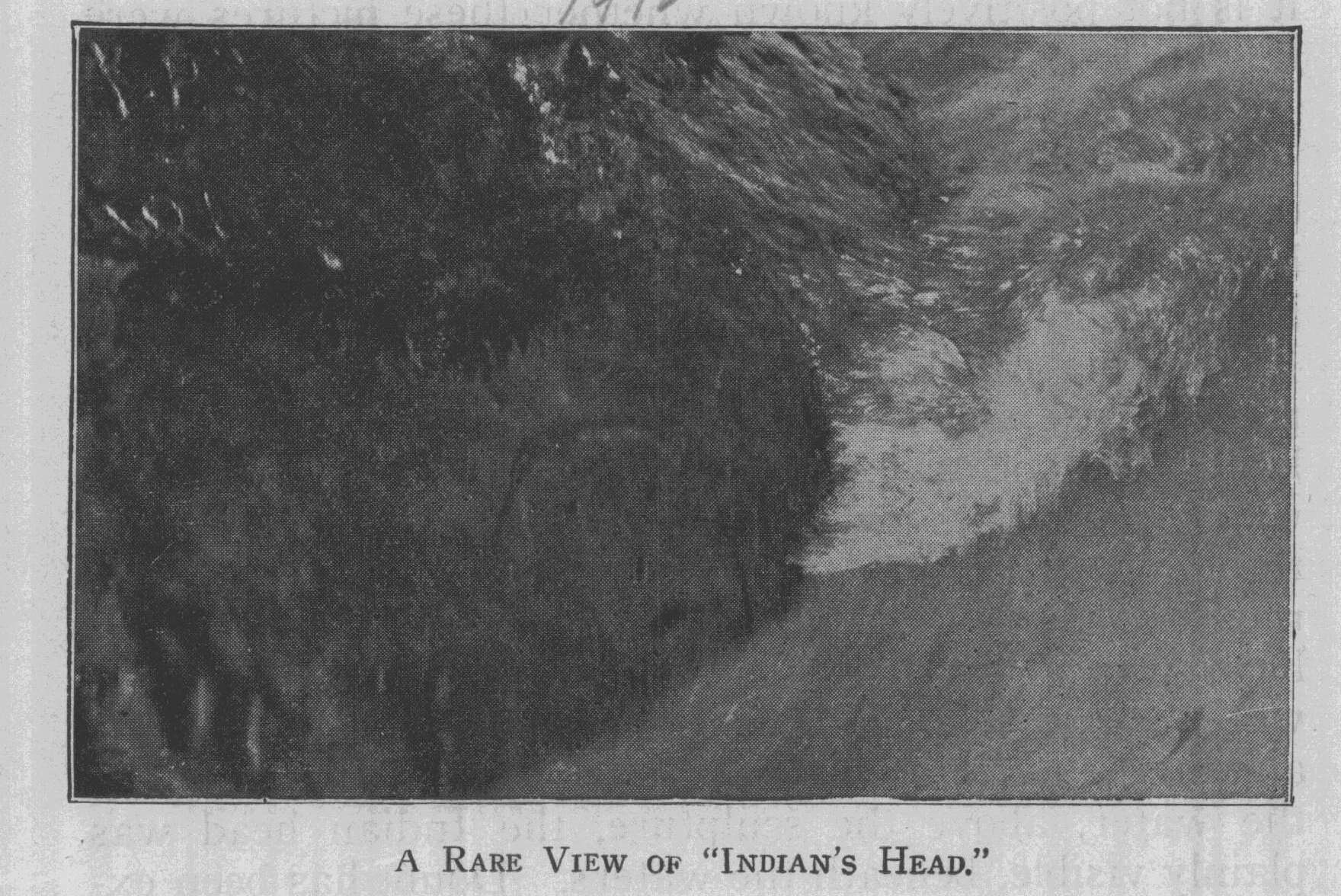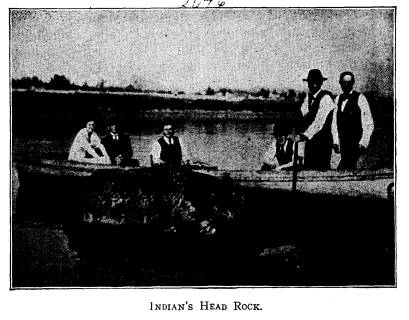Ohio History Journal
THE INDIAN'S HEAD
HENRY BANNON
The white man, when he first crossed
the Allegheny
Mountains and entered the Ohio Valley,
found many
crude drawings of the figures of men and beasts on the
rocks, along the Guyandotte and Ohio
rivers. Of course
it is not positively known whether
these pictures were
the work of Indians or of some tribes
that preceded the
Indians. On the Kentucky shore, about
opposite the
foot of Bond Street, Portsmouth, Ohio,
there still stands
one of these inscribed rocks, known as
the "Indian's
head." A hundred years ago, this
rock, and the Indian
head cut in it, could be seen when the
river was low.
But, owing to changes in the channel of
the river, the
rock is now visible only when the river
is exceedingly
low. And the face, carved on the rock,
is beneath the
water, even at its lowest stages. On
September 9, 1894,
the Ohio River was so low that about
two feet of the
rock was above the surface of the
water; and the Indian
head was about ten inches below the
surface of the
water. The head could be easily traced
with the hand;
and, in the morning, when the rising
sun shone fairly on
the water, above the sculpture, the
Indian head was
plainly visible, beneath the waters.
Doubt has been ex-
pressed as to this figure's being the
work of ancient
tribes. There is a tradition that stone
was quarried
from the hill above it, during pioneer
days, and that a
quarryman carved the Indian face.
Squier and Davis
in "Ancient Monuments of the
Mississippi Valley"
(1847) thus described it:
"It consists of a colossal human
head cut in outline, upon the
vertical face of a large rock extending
into the river. It is al-
ways under water, except when the river
is at its very lowest
stages, and is not exposed oftener than
once in four or five years.
(71)
|
72 Ohio Arch. and Hist. Society Publications. It is familiarly known as the 'Indian's head,' and is regarded as a sort of river gauge or meter. When the water line is at the top of the head, the river is considered very low." In those days there was the familiar frontier ten- dency to magnify the proportions of natural objects which tendency is now observed only by fishermen. Hence, Squier and Davis's description of the Indian head as "colossal". Neither saw it so they adopted as |
|
|
|
a fact the impression of some one possessing a rather elastic imagination. The rock, upon which the "Indian's head" is cut, was exposed during a period of low water in October, 1920. A short time prior to that low water stage some wickets of a dam in the Ohio river, a few miles west of Ports- mouth, were broken by a steamer; otherwise water would have remained over the rock, because the dam when in repair creates a deep pool extending some dis- tance beyond the location of the rock. As no picture or accurate description of the Indian's head was in ex- |
|
The Indian's Head. 73 istence, my brother, Arthur H. Bannon, determined to secure a photograph of it, if possible. On October 22, 1920, the top of the sculpture was about six inches be- neath the surface of the river so a plan to bring it into view for a photograph had to be devised. This was ac- complished by running a motor boat past the rock at very fast speed. As the boat drew the water away from the rock, a photograph was obtained of the sculpture. |
|
|
|
The difficulties in the way of a clear photograph were many, for the photographer was obliged to stand in the water and take the picture instantaneously, when the wave was at its lowest ebb, and while water was still running down the side of the rock. The work had to be done in the morning, while the sun was back of the camera, and at an hour when the atmosphere was still a little hazy and the light not good. The wickets had just been repaired and the river was slowly rising, so it |
74 Ohio Arch. and Hist. Society Publications.
was then or never. Had there been
sufficient time to do
so, a cofferdam would have been built
around the rock
that it might be thoroughly examined.
After several at-
tempts to take a photograph of the
sculpture, one was
successful and we now have an exact
reproduction of
the image that has for many years been
a mystery. The
initials E. D. C., never noticed
before, were discovered
at the right and near the bottom of the
sculpture, as one
faces it, and a date, the month of
which (September)
only could be made out. The initials
were neatly carved,
evidently by one quite adept in stone
carving. Such was
the only time, within the memory of any
living man,
that the Indian's head has been seen,
except when cov-
ered with water. In all probability
neither the Indian's
head, nor the rock upon which it is
cut, will ever be seen
again, as it is hardly within the
realms of chance that the
dam will be broken at such an opportune
time.
Unquestionably the Indians head was not
the work
of a quarryman. It bears strong
resemblance to other
Indian carvings and impresses the mind
with the fact
that it is thoroughly Indian in its
execution. The out-
line is cut in the southeast corner of
the rock and faces
east.
There is another rock, about one
hundred yards
upstream from the Indian rock, upon
which some one in
recent years carved an Indian profile
with feathered
head-dress, but this one is not the
genuine Indian head,
though frequently taken for it.

